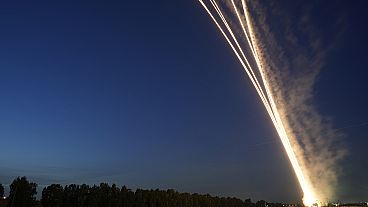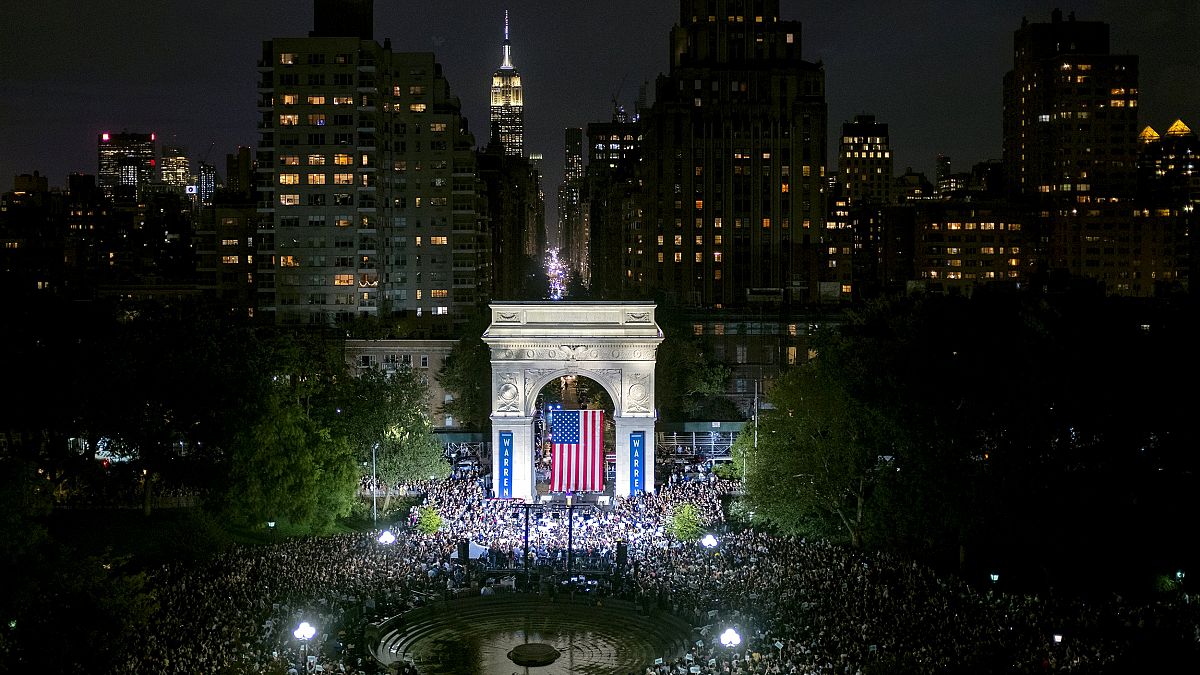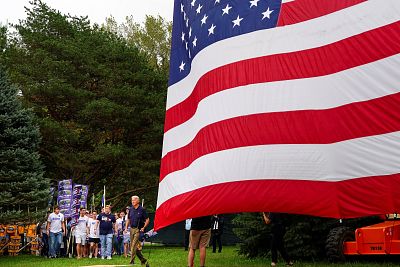The headcount in early-voting states doesn't always indicate who's on the way to the nomination.
COUNCIL BLUFFS, Iowa — Joe Biden recently spoke to a crowd of some 500 people at the Grass Wagon, a warehouse event space here. But just a few weeks earlier, another top contender, Elizabeth Warren, packed more than 1,100 into the same spot.
Around the same time, in Des Moines, a more intimate crowd of about 100 people stood in the Platinum Signature Barbershop to hear Cory Booker hoarsely deliver his stump speech. As attendees chowed on locally prepared barbecue, the New Jersey senator closed out the event with an impromptu charity drive — shaving three people's heads and personally donating to others' non-profit of choice.
In an era where President Donald Trump has made crowd size a proxy for popularity — and as he continues to boast on social media of his power to draw vast throngs — the Democrats running to challenge him in 2020 vary widely in their approach to conducting campaign events and building crowds.
While some, like Warren and fellow progressive Bernie Sanders, clearly thrive at large rallies, others, including Biden, mostly draw smaller gatherings. It's in settings like this, those campaigns say, that voter interaction happens best.
"Crowds give you, first and foremost, a snapshot of the energy in a campaign," said Matt Paul, who ran Hillary Clinton's winning Iowa caucus effort in 2016. "Not just are they attracting large crowds? But are those crowds enthused? Are they responding to the key messages from the candidate?"
Warren's crowds have been growing bigger still as polls show her candidacy gaining steam. She held a rally in New York's famed Washington Square Park with a crowd estimated at 20,000 people, and then stayed four hours more to pose for photos with 4,000 people who lined up after the speech. The "selfie line" has become a distinguishing feature of Warren's campaign appearances.
Warren's crowds have caught Trump's attention. "They do stories so big on Elizabeth 'Pocahontas' Warren's crowd sizes, adding many more people than are actually there. And yet my crowds, which are far bigger, get no coverage at all. Fake News!" he tweeted last month.
Large crowds, of course, don't always predict a winning candidacy. In 2016, Clinton outpaced Sanders for the Democratic nomination even though the Vermont senator consistently drew bigger crowds. But Clinton went on to lose to Trump in the general election, having never attracted the kind of enthusiastic turnout to her rallies that Trump — or Sanders — drew to theirs.
Biden's team insists his relatively modest crowds are mostly by design.
"Our campaign aims for a sweet spot of attendees so that the VP can personally connect with every voter in the room," said Julia Krieger, Biden's Iowa communications director.
That "sweet spot" usually falls between 150-400 attendees, which typically limits the level of excitement compared to the crowds of thousands Warren often attracts.
Yet Warren's photo lines in which supporters sometimes wait for hours for a selfie with the candidate help bring a measure of intimacy to her large rallies, Paul noted.
"It's giving her direct time with key voters to hear from them, to engage with them directly, and that's important and personalizes these large events," he said.
Biden campaign aides can sound defensive when discussing crowd size.
"There is often an implicit suggestion that because voters believe Joe Biden is the most electable Democratic candidate, that there is not also genuine and passionate support for his candidacy and his message. It's wrong," one senior Biden official told NBC News.
The official said that what Biden may lack in crowd size is made up for in voter enthusiasm, measured not only by head count but also by polling across demographics, especially among African Americans. "Enthusiasm can't be defined just by who excites white progressives," the official said.
Engaging with various voter blocs, strategists say, is more important than the attendees who show up in any particular room. Older people, for instance, vote in large numbers relative to other populations but may be less likely to come to campaign rallies.
"As you're looking at the crowd sizes and the energy that's there, you should also be looking at who's not there," Paul said. "What voters aren't you reaching? How does that sync up with the research and the polling and the (focus)groups that you're doing?"
Sanders, for his part, has altered his approach to crowds compared with 2016.
In addition to large rallies — exemplified by a recent crowd of more than 10,000 in Denver — the candidate balances the variety of events, often attending casual backyard ice cream socials and smaller town halls. Their goal is to drill down on issues affecting specific communities and allow for more audience engagement.
Another contender, Kamala Harris, curates her crowd sizes around time of day. The campaign will often host medium-sized events of 150 people or less during the day, saving larger rallies for evenings when more voters are able to attend.
Julián Castro, among others, tries to build crowds on the sidelines of multi-candidate "cattle calls" in the early-voting states. His crowd numbers have grown over time but are often connected to a larger event, like a state labor convention, which attract hundreds of attendees.
Booker goes for small to mid-size events.
"Overall, we want voters to walk away having met Cory," Booker's Iowa state director Mike Frosolone told NBC News. "Whenever Cory has a chance to speak one on one, or in smaller groups, we see folks sign on to the campaign. The biggest thing is that we see crowds grow over time and that's absolutely what's happening for us."
Pete Buttigieg, who was all but unknown to most voters just months ago, has attracted good-sized crowds that continue to grow. The South Bend mayor started off hosting modest gatherings in backyards across Iowa, and his appearances lately turn out numbers in the hundreds.
While the Buttigieg campaign still emails, tweets and calls voters to invite them to events, his campaign strategists say crowd size isn't their main focus.
"Our field organization isn't about building crowds," said Brendan McPhillips, Buttigieg's Iowa state director. "It's about capturing the crowds when they show up and getting them plugged into our organizing program."
Andrew Yang has largely relied on digital tools to produce real-world crowds. The entrepreneur's supporters, who call themselves the "Yang Gang," largely came together on social media platforms and via Joe Rogan's podcast, which is popular among Reddit and 4chan users.
Yang drew a young and diverse audience of 175 people at a house party in North Hampton, New Hampshire, in August, far outpacing many other candidates at similar events in the Granite state.
While Iowa, New Hampshire and other states that vote early in the calendar naturally draw most candidate visits, places that don't get the "first in the nation" treatment are eager to see the candidates. Warren was recently greeted by 12,000 supporters in Minnesota, while 2,500 people joined Sanders at a rally in Louisville, Kentucky, the same week.



